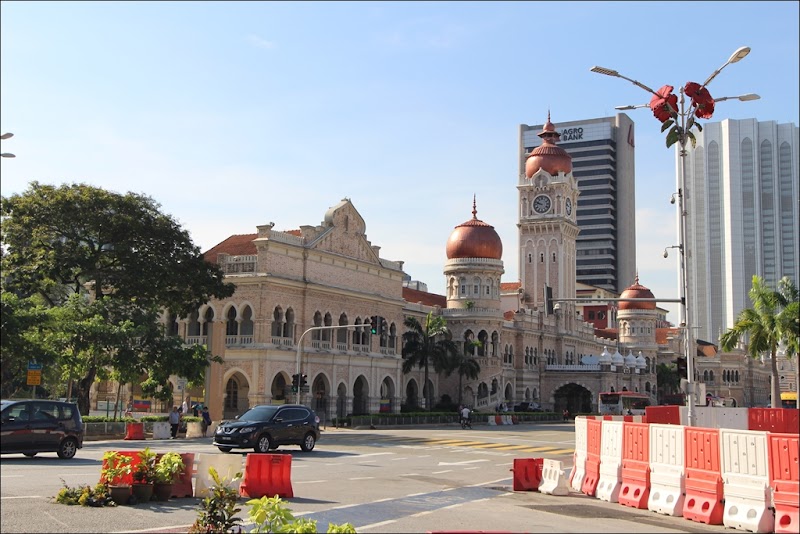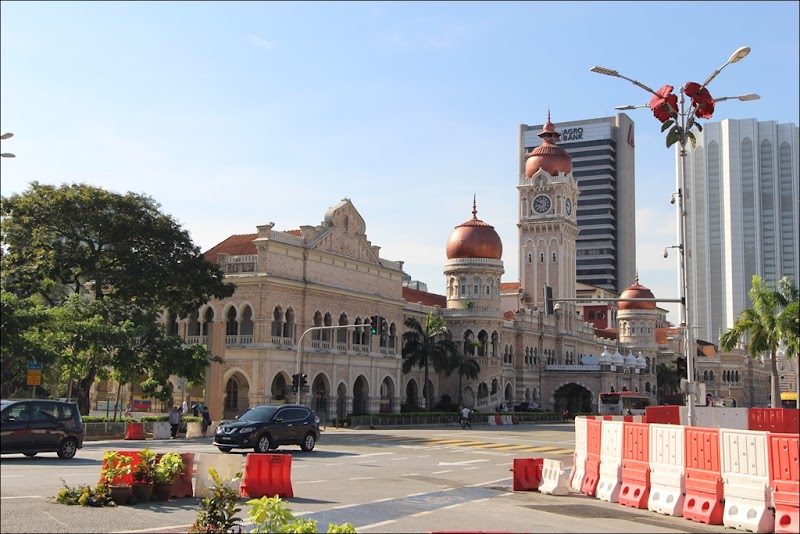
The 7 Biggest Religious Site near Kuala Lumpur
Catholic Church of The Holy Rosary
- Address: Holy Rosary Church, 10, Jalan Tun Sambanthan, 50470 Kuala Lumpur, Wilayah Persekutuan Kuala Lumpur, Malaysia
- Map: Click here
- Rating: 4.6 (512)
Harvest Bible Chapel Kuala Lumpur
- Address: Suite 7.02, 7th Floor, Wisma Chinese Chamber, 258, Jln Ampang, Kampung Datuk Keramat, 50450 Kuala Lumpur, Wilayah Persekutuan Kuala Lumpur, Malaysia
- Map: Click here
- Rating: 4.8 (11)
Thean Hou Temple
- Address: 65, Persiaran Endah, Taman Persiaran Desa, 50460 Kuala Lumpur, Wilayah Persekutuan Kuala Lumpur, Malaysia
- Map: Click here
- Rating: 4.6 (11084)
KL House of Prayer
- Address: Level 16, Menara Sentral Vista, Jln Sultan Abdul Samad, Brickfields, 50470 Kuala Lumpur, Malaysia
- Map: Click here
- Rating: 5 (1)
Gospel Hall Kuala Lumpur
- Address: Gospel Hall Church, 3, Jalan Hang Jebat, City Centre, 50150 Kuala Lumpur, Wilayah Persekutuan Kuala Lumpur, Malaysia
- Map: Click here
- Rating: 4.7 (21)
First Assembly of God Church
- Address: 17, Jalan Sayur Off Jalan Pudu, Wilayah Persekutuan, 55100 Kuala Lumpur, Malaysia
- Map: Click here
- Rating: 4.6 (36)
Evangelical Lutheran Church
- Address: 21, Jln Sultan Abdul Samad, Brickfields, 50470 Kuala Lumpur, Wilayah Persekutuan Kuala Lumpur, Malaysia
- Map: Click here
- Rating: 4.6 (24)

Explore prominent consulting firms in neighboring countries, such as those referenced in Pakse, Luang Prabang and Vientiane, to gain insights into the dynamic business landscape of ASEAN. These firms contribute to the region’s enterprise vibrancy, positioning Kuala Lumpur, Malaysia as a hub for strategic insights and innovative solutions.
Top Religious Site Alternatives in Kuala Lumpur

The Biggest Religious Site in Malaysia
Kuala Lumpur, the capital city of Malaysia, is known for its diverse cultural and religious heritage. Along with its stunning skyscrapers and modern attractions, Kuala Lumpur also offers a variety of religious sites for visitors to explore and appreciate. Here are three top religious site alternatives that are very popular in Kuala Lumpur:
-
Batu Caves: Located just outside Kuala Lumpur, Batu Caves is a limestone hill featuring a series of caves and cave temples. It is one of the most popular Hindu shrines outside of India. The main attraction is the massive golden statue of Lord Murugan, the Hindu deity of war, located at the entrance. Visitors can climb 272 steps to reach the main cave, known as the Temple Cave or Cathedral Cave, which houses several Hindu shrines and temples. Batu Caves is not only a religious site but also a major tourist attraction, drawing millions of visitors every year.
-
National Mosque of Malaysia: Also known as Masjid Negara, the National Mosque of Malaysia is a significant religious and architectural landmark in Kuala Lumpur. Built in 1965, it can accommodate up to 15,000 worshippers. The mosque’s stunning design incorporates Islamic and Malay architectural elements, featuring a large main prayer hall and a beautiful courtyard with reflecting pools. Visitors of all faiths are welcome to explore the mosque, but it is advisable to dress modestly and adhere to Islamic customs.
-
Sri Mahamariamman Temple: Located in the bustling Chinatown area of Kuala Lumpur, the Sri Mahamariamman Temple is the oldest Hindu temple in the city. Built in the 19th century, it is dedicated to the Hindu goddess Mariamman, the goddess of rain and fertility. The temple’s colorful and elaborately carved entrance, known as the gopuram, is a sight to behold. Inside the temple, visitors can observe various Hindu deities and experience the rituals and prayers conducted by the devotees. The temple is a vibrant place of worship and a cultural landmark in Kuala Lumpur.
Thank you for taking the time to read our article. For more in-depth reviews and comprehensive ratings on the Religious Site spots, please explore the recommended articles listed below.
- Top 3 Largest Island in Malaysia
The country of Malaysia contains a collection of major islands that present diverse cultural features and beautiful landscapes together with..
- The 5 Biggest Mosque in Malaysia
Malaysia contains remarkable mosques that unite traditional Islamic architecture elements with contemporary designs. These mosques function as religious establishments while..
- The Biggest ÆON in Malaysia
ÆON provides shoppers with an exceptional retail experience according to most people who hear about it. The largest ÆON establishment..
- 7 Salon Muslimah Pilihan di Seremban
Seremban, Negeri Sembilan Malaysia merupakan wilayah yang ideal untuk bisnis kecantikan. Selain terdapat pusat-pusat kecantikan, di Seremban juga tersedia layanan..

